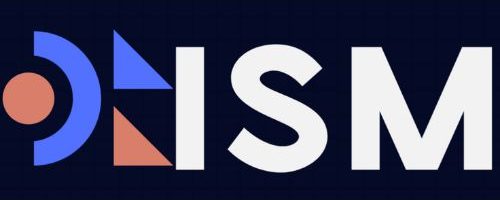Optimize Stock with Inventory Planning Software
In the United States, businesses face challenges like tighter lead times, unpredictable demand, and increasing storage costs. Inventory planning software helps by centralizing data from various sources. This ensures stock levels are balanced and cash is used efficiently. It leads to quicker decision-making, fewer stockouts, and less excess inventory.
Today’s platforms go beyond traditional tools like spreadsheets and outdated ERPs. They offer automation, AI forecasting, and analytics designed for large-scale operations. These systems integrate with financial planning and management, connect to stock management systems, and support barcode and RFID tracking. This ensures accurate inventory updates in real-time.
Companies choose inventory optimization solutions to align demand signals with purchasing, production, and fulfillment processes. Vendors like Cube, Katana, Inventory Planner, Zoho Inventory, inFlow, Sortly, Square, Odoo, monday.com, and Spocket offer faster setup, reduced manual tasks, and enhanced accuracy. Trustpilot’s high rating for Unleashed, with a 4.8/5 score from over 990 reviews, highlights the software’s value in replacing manual methods with integrated solutions.
For U.S. retailers, ecommerce operators, and small to medium-sized manufacturers, the need is clear. They must link planning to execution and finance. Inventory planning software, when integrated with your stock management system, provides visibility. It helps protect service levels and boosts profit margins across the United States.
What Is Inventory Planning Software and How It Works
Inventory planning software collects data from various sources like warehouses, suppliers, and sales channels. It displays current stock levels, open orders, and items needing replenishment. This software integrates with inventory management systems to unify data on counts, costs, and lead times. It also includes a demand forecasting tool and inventory tracking software, helping teams determine what to buy, when, and where.
These platforms standardize item details, lot and serial numbers, and service levels. They synchronize purchase, transfer, and sales orders to maintain accurate available-to-promise levels. This results in faster inventory cycles and fewer errors compared to manual spreadsheets.
Real-time visibility across warehouses, suppliers, and sales channels
Live dashboards provide real-time data on stock levels by location. They integrate with POS, ecommerce platforms, and vendor portals to show net demand and safety stock. The inventory management system updates counts after every transaction, ensuring data accuracy.
Vendors like Zoho Inventory, inFlow, and Square alert users to low stock and exceptions. Katana offers shop-floor updates and reorder points based on consumption, improving service levels across multiple sites.
Automation, AI forecasting, and analytics beyond spreadsheets and legacy ERPs
Modern inventory planning software automates replenishment and purchase suggestions. It uses AI for demand forecasting, reducing bias and improving accuracy. These systems outperform legacy ERPs with rapid what-if scenarios and exception-based workflows.
Cube centralizes data in Excel and Google Sheets for SKU-level margin analysis. Inventory Planner projects future demand and auto-generates purchase orders. Odoo supports make-to-order and dynamic reordering logic.
Core functions: FP&A alignment, warehouse and order management, barcode and RFID tracking
FP&A alignment links inventory plans to financial goals. It models service levels, carrying costs, and supplier terms to guide buying decisions. Driver-based assumptions connect item velocity to financial outcomes.
Warehouse and order management coordinate logistics across sites. Barcode scanning speeds up cycle counts and receipts. RFID enables real-time updates without line-of-sight. Sortly focuses on mobile barcode and QR capture, while monday.com offers customizable workflows.
| Capability | Operational Impact | Representative Solutions | Why It Matters |
|---|---|---|---|
| Real-time visibility | Accurate ATP, fewer stockouts | Katana, Zoho Inventory, Square | Synchronizes sales, supplier ETAs, and warehouse moves |
| AI demand forecasting | Lower error rates, tighter safety stock | Inventory Planner, Cube | Improves buy timing and quantity decisions |
| Automated replenishment | Faster PO creation, reduced manual work | Odoo, inFlow | Triggers reorders based on rules and lead times |
| Barcode and RFID tracking | Quicker counts, fewer discrepancies | Sortly, Zoho Inventory | Boosts data accuracy for inventory tracking software |
| FP&A alignment | Clear margin targets and cash control | Cube | Ties inventory planning to budgets and scenarios |
| Omnichannel sync | Unified stock across marketplaces | Spocket, Square | Keeps listings and store counts consistent |
Benefits for U.S. Retailers, Ecommerce, and SMB Manufacturers
In the United States retail sector, data-driven planning is key to maintaining service levels and reducing costs. An inventory optimization solution ensures purchases align with sales trends, promotions, and seasonal demand. This approach minimizes stockouts and surplus. Inventory Planner’s AI forecasting and automated purchasing streamline orders to meet demand, boosting cash flow.
Visibility across multiple locations enhances fulfillment accuracy. Zoho Inventory, inFlow, and Katana offer real-time stock visibility by warehouse and channel. This reduces manual reconciliation and mispicks. Barcode and RFID tracking in Zoho Inventory, along with QR and barcode tools in Sortly and inFlow, streamline cycle counts and lower error rates.
FP&A-aligned planning enhances margin control. With Cube, teams can model at the SKU and margin level. They use driver-based planning tied to labor, machine hours, and material costs. This approach allows for early detection of variances, protecting gross margin. These controls complement inventory control software for tighter replenishment and balanced safety stock.
POS-integrated platforms send immediate stock updates and low-stock alerts. Square connects sales to replenishment rules, ensuring store and online channels stay in sync. Customizable workflows in Odoo and monday.com adapt to unique routing, approvals, and kitting steps without adding overhead.
For ecommerce growth, Spocket automates dropshipping and real-time inventory sync, limiting on-hand risk while scaling catalogs. When paired with supply chain optimization software, brands coordinate vendor lead times, reorder points, and service levels across regions. This improves on-time fulfillment and cash flow.
Unleashed customer stories and a strong Trustpilot rating highlight measurable outcomes. These include less time in spreadsheets, faster replenishment cycles, and year-over-year growth after adopting integrated platforms with automated reporting. These gains demonstrate the effectiveness of an inventory optimization solution and inventory control software in streamlining operations across United States retail and manufacturing.
Inventory Planning Software
Modern inventory planning software integrates planning, purchasing, and fulfillment into a single workflow. It complements inventory management systems and broader stock management systems. It aligns demand signals with supply and finance. Teams use it to reduce manual updates, synchronize data, and make timely buy and transfer decisions.
Key features shoppers evaluate: demand forecasting tool, automated replenishment, multi-location tracking
A robust demand forecasting tool models historical sales and seasonality to predict future needs. Platforms like Inventory Planner and Katana apply these methods to set realistic targets by SKU and channel.
Automated replenishment turns forecasts into action. Katana and Odoo use reorder points and purchasing recommendations to prevent stockouts and overbuys. Buyers also look for barcode, QR, and RFID support in Zoho Inventory, inFlow, and Sortly, plus low-stock alerts from Square and Zoho Inventory.
Multi-location tracking is essential for transfers and ATP accuracy. inFlow, Zoho Inventory, and Katana monitor bins, lots, and variants. This way, teams can see what is available, committed, and inbound at each site.
How it connects to your inventory management system and stock management system
Inventory planning software consolidates orders, receipts, and on-hand balances. It then synchronizes these changes across an inventory management system and any stock management system. This results in consistent quantities, costs, and statuses across planning, warehouse, and sales.
Cube exemplifies this data model by unifying POS, ecommerce, ERP, and payroll feeds for spreadsheet-based planning. This structure supports SKU-level analysis, scenario planning, and financial rollups without rekeying entries.
Integrations that matter: POS, ecommerce, ERP, shipping, and accounting
Priority integrations include POS tools like Square and ecommerce platforms such as Shopify and major marketplaces. Katana and Square support direct online-to-operations sync, while Spocket connects with Shopify, WooCommerce, Wix, Squarespace, Amazon, and eBay for automated dropshipping.
ERP and warehouse connectivity extends control. Katana’s ERP-style features and Odoo’s suite streamline production and fulfillment. Shipping links within Odoo and the Square ecosystem accelerate label creation and tracking, and accounting ties to QuickBooks and Xero through Katana, Zoho Inventory, and inFlow improve reconciliation speed.
These connections reduce manual reconciliation, shorten the order-to-cash cycle, and maintain accuracy across the tech stack.
| Capability | Representative Tools | Operational Effect | Who Benefits |
|---|---|---|---|
| Demand forecasting tool | Inventory Planner, Katana | Aligns buys with seasonality and channel mix | Merchandising, FP&A |
| Automated replenishment | Katana, Odoo | Generates purchase orders from reorder points | Purchasing, Operations |
| Multi-location tracking | inFlow, Zoho Inventory, Katana | Improves transfers and ATP accuracy by site | Warehouse, Sales |
| Barcode/QR/RFID | Zoho Inventory, inFlow, Sortly | Faster counts and lower scan errors | Inventory Control |
| POS and ecommerce | Square, Shopify, Spocket | Real-time order capture and stock sync | Retail, Ecommerce |
| ERP and shipping | Katana, Odoo, Square ecosystem | Streamlined production and carrier labels | Manufacturing, Logistics |
| Accounting integration | QuickBooks, Xero via Katana, Zoho Inventory, inFlow | Accurate COGS and faster close | Finance, Accounting |
From Spreadsheets to Intelligent Planning: Capabilities That Reduce Costs
Transitioning from static files to real-time control offers faster cycles and measurable savings. Modern platforms integrate demand signals, operational metrics, and financial drivers into an inventory optimization solution. Teams now make data-driven decisions, replacing guesswork with actionable insights from supply chain optimization software.
AI-powered forecasting to prevent stockouts and surplus
Inventory Planner and Katana leverage machine learning for precise purchase plans. They consider seasonal trends, promotions, and lead times. Automated purchasing minimizes excess stock and reduces rush shipping by aligning orders with demand.
Square uses sales-velocity signals for stock alerts, while Odoo applies reordering rules to match supply and service levels. These features act as an inventory optimization solution, cutting carrying costs and limiting lost sales. Embedded analytics in supply chain optimization software highlight exceptions, enabling targeted reorders and right-sized safety stock.
Barcode and RFID for fast, error-free inventory updates
Zoho Inventory supports barcode, serial, and batch tracking; inFlow adds QR codes for quick scans; Sortly enables mobile QR and barcodes on the floor. These tools speed up counts, receiving, and put-away, while reducing manual entry errors. Clean data feeds inventory tracking software, ensuring replenishment logic remains accurate.
With perpetual records and synchronized accounting, inventory control software provides timely availability and cost layers for purchasing decisions. Faster cycle counts improve service levels and compress working capital tied up in slow movers.
Driver-based planning that ties production metrics to financial outcomes
Cube links machine hours, scrap rates, labor, and material costs directly to margin and throughput. Teams run multi-scenario models and use AI-driven variance detection to flag deviations from plan. This creates a closed loop between operations and FP&A, informing lot sizes, shift staffing, and reorder quantities.
Odoo’s make-to-order flows and Unleashed case stories show how driver-based plans reduce buffers while protecting fill rate. When combined with inventory control software and inventory tracking software, organizations gain a disciplined method to fund growth and scale processes with supply chain optimization software.
Top Inventory Optimization Solutions and When to Use Them
Choosing the right inventory optimization solution is key. It depends on your business’s scale, channels, and planning maturity. The options below cater to common U.S. scenarios. They connect inventory planning software with an inventory management system and a demand forecasting tool. This combination boosts service levels and cash conversion.
Cube (FP&A-first planning in Excel/Google Sheets) for SKU, margin, and multi-scenario analysis
Cube is ideal for mid-market finance teams. It offers spreadsheet-native planning with integrated operational data. It supports automated consolidation, AI variance detection, and SKU-level margin analysis. Pricing starts at $2,000 per month.
It’s best for FP&A teams needing multi-scenario modeling. This should be tied to a demand forecasting tool and an inventory management system.
Katana for real-time manufacturing inventory, variants, and automated reorders
Katana is designed for mid-sized manufacturers. It offers live stock, purchase and sales order control, and automated reorder points. It integrates with Shopify, QuickBooks, and Xero. Pricing: Standard $359, Professional $799, Professional Plus $1,799 per month.
Apply it when production scheduling and variants require synchronized inventory planning software with shop-floor signals.
Inventory Planner for ecommerce demand forecasting and automated purchasing
Inventory Planner focuses on ecommerce. It provides demand forecasting, automated purchasing, multi-warehouse analytics, and SKU profitability. Pricing is on request.
Select it when a retailer needs a dedicated demand forecasting tool. This tool should drive replenishment across marketplaces and DTC stores.
Zoho Inventory and inFlow for multi-channel, multi-warehouse control
Zoho Inventory offers multichannel selling, barcode and RFID tracking, warehouse management, and stock alerts. Monthly pricing: Free, Standard $39, Professional $99, Premium $159, Enterprise $299.
inFlow centralizes orders and stock with barcode and QR support, sublocations, and reorder points. Monthly pricing: Entrepreneur $186, Small Business $436, Mid-size $999.
Choose these when a business needs an inventory management system. This system should scale across locations and tie to accounting.
Sortly and Square for mobile, barcode-first inventory tracking
Sortly delivers mobile-first, visual tracking with QR and barcode scanning plus low-stock alerts. Monthly pricing: Free, Advanced $49, Ultra $149, Premium $299, Enterprise custom.
Square integrates POS and stock with real-time updates, alerts, reports, and forecasting. Pricing: Free, Plus $29 per month, Premium custom.
Adopt them when teams need fast, barcode-led execution. They should also align with POS inventory planning software.
Odoo and monday.com for customizable workflows and automations
Odoo provides configurable WMS with reordering rules, RFQs, make-to-order flows, and out-of-stock date forecasting. Core starts free with paid modules.
monday.com adds templates, automations, and real-time tracking. Pricing: Free, Basic $9 per seat, Standard $12, Pro $19 billed annually, Enterprise on request.
Deploy when custom workflows must connect a demand forecasting tool with an inventory management system. This should be through flexible automation.
Spocket for automated dropshipping and real-time inventory sync
Spocket automates supplier routing with real-time inventory sync for Shopify, WooCommerce, Wix, Squarespace, Amazon, and eBay. Pricing includes a 14-day trial and Starter at $39.99 per month.
Use it when the inventory optimization solution must reflect supplier stock in minutes. It should also accelerate catalog expansion without holding inventory.
- Noted trade-offs: Katana installs fast but has limits in serial tracking and reporting flexibility; inFlow users cite reporting and sublocation behavior quirks; Zoho Inventory limits warehouses on lower tiers; Square may face occasional downtime and device compatibility constraints.
Match each option to your operational goals. Unify planning data, automate reorders, and align forecasting with execution. This structured approach pairs the right inventory planning software, an inventory management system, and a demand forecasting tool. It supports growth with controlled risk.
Supply Chain Optimization Software: Forecasting, S&OP, and Replenishment
Modern teams now link planning with execution, merging forecasts, finance, and operations into a single plan. Supply chain optimization software combines demand signals with ERP actuals, providing a unified view of truth. This integration with inventory and stock management systems shifts decision-making from guesswork to measurable control.

Linking forecasting with ERP data for unified Sales & Operations Planning (S&OP)
Unified S&OP demands synchronized data across sales, marketing, operations, and finance. Platforms like AGR merge forecasting with ERP data, standardizing calendars, item hierarchies, and KPIs. Inventory planning software then develops scenario models that align demand, capacity, and cash.
Teams benefit from real-time variance views and a unified planning cadence. With ERP-driven master data and automated workflows, the inventory management system remains central. Supply chain optimization software adds the analytics layer.
Data-driven stock replenishment strategies to protect service levels and cash flow
Data-driven replenishment adjusts reorder points, safety stock, and lot sizes based on service targets and lead times. AGR case studies show higher availability with lower working capital through automated methods over static rules. Odoo and Zoho implement policy at the SKU level through reordering rules and make-to-order logic.
Katana and inFlow support network-level planning with automated reorder points and multi-warehouse views. Connected to a stock management system, buyers can stage inventory by channel and region. Inventory planning software then calculates optimal orders to safeguard cash flow.
Operational KPIs: inventory turnover, lost sales, and forecast accuracy
KPIs are the backbone of governance. Inventory Planner tracks forecast accuracy and lost income to reveal demand risk. Cube offers KPI dashboards and variance detection, ensuring plan-to-actuals alignment across periods. Square uses sales velocity-based forecasting to refine min-max rules and cycle counts.
Inventory turnover, lost sales, and forecast accuracy guide corrective actions within the inventory management system. With supply chain optimization software and a disciplined stock management system, teams benchmark performance by site, category, and vendor. This ensures service and capital remain in balance.
Feature Deep Dive: Inventory Tracking Software and Inventory Control Software
Inventory tracking software offers detailed item-level visibility through barcodes, QR codes, and RFID. Sortly enables mobile scans and real-time syncing across devices. This ensures accurate counts, whether in the aisle or on the dock. inFlow generates and prints barcodes and QRs, tracks items by location, bin, and status, and enforces reorder points. Zoho Inventory manages barcodes, serials, and batches across multiple warehouses. Square updates stock inside the POS with integrated scanning.
RFID in Zoho Inventory speeds up cycle counts and cuts down on manual entry. These features help limit shrinkage, speed up receiving, and standardize records across sites. When paired with inventory planning software, teams get a unified view of inventory movements, locations, and replenishment needs.
Inventory control software builds on these capabilities with governance features. Odoo supports min–max rules, make-to-order paths, and automated RFQs to suppliers. Katana automates purchase orders based on demand and lead times to protect service levels. Inventory Planner adds SKU-level forecasting, replenishment recommendations, and profitability measurement that align orders with margins.
Finance alignment is key at close. Cube brings FP&A-first control with audit trails, user permissions, centralized formulas, and drill-downs to transaction history. This turns inventory optimization into a repeatable planning process. The outcome is quicker reconciliations, fewer count variances, and stronger reporting discipline.
Across retailers, ecommerce, and manufacturers, the combined stack of inventory tracking software and inventory control software reduces cycle count labor and errors. When paired with inventory planning software, organizations maintain accurate on-hand balances, enforce policy, and plan reorder timing with data confidence.
| Platform | Primary Role | Key Tracking/Control Features | Operational Impact | Best-Fit Use Case |
|---|---|---|---|---|
| Sortly | Inventory tracking software | Mobile QR/barcode scans; real-time device sync | Faster counts; rapid field updates | Technicians and teams needing mobile-first visibility |
| inFlow | Inventory tracking software | Barcode/QR create-print-scan; bin/location/status tracking; reorder points | Lower mis-picks; automated low-stock triggers | SMBs requiring structured locations and labeling |
| Zoho Inventory | Inventory tracking software | Barcode, serial, batch; RFID support; multi-warehouse stock alerts | Faster cycle counts; cross-site accuracy | Firms with serials/batches and distributed warehouses |
| Square | Inventory tracking within POS | Integrated barcode scanning; real-time stock updates | Reduced cashier errors; instant shelf-to-POS sync | Retail locations prioritizing POS-native updates |
| Odoo | Inventory control software | Min–max rules; make-to-order; automated RFQs | Policy-driven replenishment; lead-time discipline | Operations seeking rule-based governance |
| Katana | Inventory control software | Automated purchase orders; demand- and lead-time logic | Higher service levels; fewer stockouts | Manufacturers with component and variant needs |
| Inventory Planner | Inventory optimization solution | SKU forecasting; replenishment recommendations; margin tracking | Balanced stock; improved working capital | Ecommerce and retail planning at SKU depth |
| Cube | FP&A-first control | Audit trails; role-based controls; centralized KPIs; transaction drill-downs | Financial integrity; faster close; traceable variances | Finance teams linking operations to P&L |
A mature stack combines inventory tracking software for ground truth, inventory control software for policy execution, and inventory planning software for timing and quantity decisions. Together, they form an inventory optimization solution that improves accuracy, protects margins, and supports timely purchasing.
Implementation Tips: Integrations, Change Management, and User Adoption
Execution begins with controlling scope and assigning clear ownership. Ensure IT, operations, and finance are aligned on a phased roadmap. This roadmap should link the inventory management system to forecasting, purchasing, and accounting. Implement S&OP practices from AGR to standardize calendars, roles, and cadence. Utilize inventory planning software to convert demand plans into actionable purchasing signals with robust audit controls.
Prioritize quick wins: automate low-stock alerts, set reorder points, standardize barcodes
Configure low-stock alerts in Square and Zoho Inventory on day one. Establish SKU-level reorder points in inFlow and Katana, using recent lead times and actual demand. Standardize barcode, QR, or RFID across sites with inFlow, Sortly, or Zoho to reduce cycle count errors and speed receiving.
These steps stabilize the stock management system and reduce manual checks. Pair alerts with simple exception dashboards in inventory control software. This way, buyers can focus on the most impactful items first.
Integrate POS, ecommerce, ERP, and accounting for a single source of truth
Connect POS such as Square with ecommerce platforms like Shopify, WooCommerce, Wix, Squarespace, Amazon, and eBay via Katana, Square, or Spocket. Sync ERP or WMS—Katana’s built-in ERP or Odoo—with accounting in QuickBooks, Xero, or Zoho to reconcile orders, costs, and COGS.
Use Cube to centralize POS, ecommerce, ERP, and payroll data for FP&A-driven planning. This creates one data model that feeds the inventory planning software and the inventory management system. It ensures uniform SKUs, units, and locations.
Mobile access and role-based controls to boost frontline adoption
Roll out mobile apps—Sortly, inFlow mobile, monday.com mobile, and Square POS—to empower floor teams. Keep tasks short and guided, with barcode prompts and clear exceptions.
Enable role-based controls and audit trails using Cube validations, user permissions, and history logs. Limit edit rights in the stock management system while granting visibility in inventory control software to supervisors and finance for oversight.
Provide short, job-specific training and staggered go-lives by warehouse. Use weekly S&OP reviews to resolve issues, retire manual trackers, and scale automation as accuracy improves.
ROI and Business Case: From Efficiency to Profitability
Capital allocation focuses on platforms that reduce carrying costs, maintain service levels, and expedite cash conversion. A solid business case links financial gains to operational success. This is achieved through an inventory optimization solution, supply chain optimization software, and tools like demand forecasting and inventory planning software.
Calculating ROI for inventory optimization: financial and operational benefits
Annualized ROI combines net gains from lower stockouts, reduced surplus, and labor savings over total investment. Finance teams monitor cycle time reductions, improved forecast accuracy, and lower holding costs to validate the model.
- Inventory Planner and Katana reduce stockouts and surplus through automated purchasing and forecasting.
- Square limits lost sales with real-time alerts at checkout and curbside pickup flows.
- Odoo aligns reordering and make-to-order to release working capital.
- Zoho Inventory and inFlow decrease labor and errors via barcode and multi-warehouse control.
These outcomes lead to a shorter payback period. Supply chain optimization software sustains these gains at scale.
Tying FP&A to inventory: scenario modeling, variance detection, and margin impact
Linking FP&A to operations quantifies profit effects by SKU, channel, and location. Cube enables driver-based plans, multi-scenario modeling, and AI variance detection to spot mix shifts and rising fulfillment costs.
Teams model reorder policies, service targets, and safety stock to test gross margin impact before changes go live. The demand forecasting tool and inventory planning software feed assumptions, while the ERP provides booked costs and realized margins for reconciliation.
- SKU-level profitability: tie price, cost, and carrying cost to on-hand and pipeline inventory.
- Throughput effects: simulate lead-time shocks and evaluate buffer strategies.
- Cash flow view: convert stock reductions into days of working capital released.
Evidence from vendors: faster deployments, reduced manual work, and scale
Deployment speed shortens time to value. Cube’s guided rollout accelerates FP&A alignment. Unleashed customer stories cite the removal of days of spreadsheet work per month, improving cadence for close and reforecast.
AGR reports stronger S&OP outcomes when forecasting connects to ERP and replenishment is data-driven, raising visibility and profitability. Ecosystem integrations with Square POS, Shopify, QuickBooks, Xero, and the Odoo suite add scale without excess overhead.
- Quicker go-live supports earlier measurement of ROI benchmarks.
- Lower manual effort shifts analysts to exception management and policy tuning.
- Integrated supply chain optimization software stabilizes service levels during growth.
Across these cases, the demand forecasting tool and inventory planning software anchor measurable gains. The inventory optimization solution operationalizes them across sites and channels.
Conclusion
In the United States, inventory planning software is now a cornerstone of modern business operations. It offers real-time visibility, precise forecasting, and automated restocking across various warehouses and sales channels. When combined with inventory management and supply chain optimization tools, it provides a unified platform for quicker decision-making and smoother cash flow.
The current ecosystem is highly developed and tailored for specific needs. Cube enables financial planning and analysis directly within spreadsheets, ensuring data integrity. Katana manages manufacturing with variant control and automatic reordering. Inventory Planner excels in ecommerce forecasting and purchasing.
Zoho Inventory and inFlow handle inventory across multiple warehouses, while Sortly offers mobile tracking. Square integrates inventory into its POS system. Odoo and monday.com provide customizable workflows. Spocket streamlines dropshipping with real-time inventory updates.
Vendor studies and practitioner reports highlight the benefits of integrating forecasting with ERP systems, standardizing barcode or RFID, and aligning financial planning with inventory. Executives should focus on integrating data, automating simple tasks, and tracking ROI through financial and operational metrics. These include inventory turnover, lost sales, and forecast accuracy.
The benefits are tangible and quantifiable. With the right inventory planning software, inventory management, and supply chain optimization, businesses can increase margins, maintain service levels, and expand confidently across the United States.
FAQ
How does inventory planning software deliver real-time visibility across warehouses, suppliers, and sales channels?
Inventory planning software aggregates data from various sources. It includes WMS, supplier portals, POS, and ecommerce. This shows stock, orders, and in-transit inventory in real time. Barcode and RFID updates provide insights into what’s selling, what’s low, and what needs replenishment. This is done across locations without manual reconciliation.
What advantages do automation, AI forecasting, and analytics offer beyond spreadsheets and legacy ERPs?
Automation eliminates manual entry, AI forecasting models seasonality and promotions, and analytics expose SKU-level profitability and exceptions. These tools speed up decision-making, reduce errors, and align purchasing with demand signals. This is something spreadsheets and older ERPs miss.
Which core functions matter most: FP&A alignment, warehouse and order management, and barcode/RFID?
FP&A alignment links plans and budgets to inventory drivers for margin control. Warehouse and order management orchestrate receiving, picking, and fulfillment. Barcode and RFID deliver fast, accurate counts and traceability, improving service levels and compliance.
What measurable benefits do U.S. retailers, ecommerce brands, and SMB manufacturers gain?
Companies report fewer stockouts, lower carrying costs, and faster order-to-cash. Multi-location visibility improves fulfillment accuracy, while AI forecasting and automated replenishment reduce surplus. Vendor evidence, including Unleashed’s 4.8/5 Trustpilot score, illustrates higher user satisfaction after moving off spreadsheets.
Which key features should buyers evaluate in a demand forecasting tool and inventory optimization solution?
Evaluate forecast accuracy, automated replenishment with reorder points, and multi-location tracking. Confirm barcode/QR/RFID support, low-stock alerts, SKU and margin analytics, and integration depth with your inventory management system and stock management system.
How does inventory planning software connect with an inventory management system and broader stock management system?
It synchronizes stock levels, purchase and sales orders, and financials across POS, ecommerce, ERP, and accounting. This creates a single source of truth for planning, replenishment, and performance reporting.
Which integrations matter most for supply chain optimization software?
Priority integrations include POS (Square), ecommerce and marketplaces (Shopify, Amazon, eBay), ERP/WMS (Odoo, Katana), shipping carriers, and accounting (QuickBooks, Xero). Robust APIs reduce manual work and improve data accuracy.
How does AI-powered forecasting prevent stockouts and surplus?
AI models historical sales, velocity, promotions, and seasonality to generate precise demand signals. The system then automates purchasing and safety stock adjustments, aligning orders to lead times and service-level targets.
Why are barcode and RFID essential for fast, error-free inventory updates?
Barcode and QR scanning accelerates receiving and picking while cutting data-entry errors. RFID enables item-level, real-time reads without line-of-sight, improving cycle counts, traceability, and replenishment accuracy.
What is driver-based planning and how does it tie operations to financial outcomes?
Driver-based planning links machine hours, material costs, scrap, and labor to margins and throughput. Finance teams model scenarios and detect variances early, protecting gross margin and cash conversion.
When should a team choose Cube, Katana, or Inventory Planner?
Choose Cube for FP&A-first planning in Excel/Google Sheets with SKU-level profitability and variance detection. Select Katana for manufacturing inventory, production, and automated reorders. Use Inventory Planner for ecommerce demand forecasting and purchasing automation.
Where do Zoho Inventory and inFlow fit for multi-warehouse control?
Both support multi-location tracking, barcode/serial management, and low-stock alerts. They centralize orders and inventory across warehouses and channels, improving accuracy and fulfillment speed.
How do Sortly and Square support mobile, barcode-first inventory tracking?
Sortly focuses on mobile QR/barcode tracking with visual catalogs. Square integrates inventory with POS for real-time updates, alerts, and downloadable reports at the point of sale.
Why pick Odoo or monday.com for customizable workflows and automations?
Odoo offers configurable WMS, reordering rules, RFQs, and make-to-order logic. monday.com provides adaptable boards and automations to tailor approvals, tasks, and status tracking to unique operations.
How does Spocket help with automated dropshipping and real-time inventory sync?
Spocket connects to Shopify, WooCommerce, Wix, Squarespace, Amazon, and eBay, syncing supplier stock to stores in real time. This reduces overselling risk and removes manual updates.
How do companies link forecasting with ERP data for unified S&OP?
By integrating demand forecasts into ERP master data and standard reports, teams align sales, operations, and finance to a single plan. This improves visibility, cadence, and decision speed.
Which replenishment methods protect service levels and cash flow?
Use data-driven reorder points, safety stock policies, and lot sizing calibrated to lead times, variability, and target fill rates. Automated purchasing enforces policy at scale.
What KPIs should teams track to govern performance?
Track inventory turnover, lost sales, forecast accuracy, service level, and days of inventory on hand. Tie these metrics to financial outcomes for accountability.
What distinguishes inventory tracking software from inventory control software?
Inventory tracking software centers on item visibility and movement with barcode/QR/RFID. Inventory control software adds governance—reorder rules, min-max, make-to-order, and automated POs—to maintain service levels and margins.
Which quick wins accelerate implementation and user adoption?
Enable low-stock alerts, set product-level reorder points, and standardize barcode or RFID. Provide mobile access and role-based controls to support frontline adoption.
How should teams integrate systems to create a single source of truth?
Connect POS, ecommerce, ERP/WMS, and accounting through native integrations or APIs. Centralize data to align planning, execution, and financial reporting.
How do mobile access and role-based controls improve outcomes?
Mobile apps speed counts and receiving on the floor. Role-based permissions, audit trails, and validations increase data quality and compliance.
How is ROI calculated for an inventory optimization solution?
Calculate annualized ROI using cost savings, margin gains, and cash released from lower inventory. Include cycle time reduction, higher forecast accuracy, fewer stockouts, and labor savings.
How does tying FP&A to inventory improve profitability?
Scenario modeling and variance detection quantify margin impact by SKU and driver. Finance adjusts plans quickly, protecting gross margin and working capital.
What vendor evidence supports faster deployments and reduced manual work?
Vendors report rapid implementations and automation replacing spreadsheets. Unleashed’s 4.8/5 Trustpilot rating and case stories, along with ecosystem integrations from Square, Shopify, QuickBooks, and Odoo, demonstrate scale and efficiency gains.







